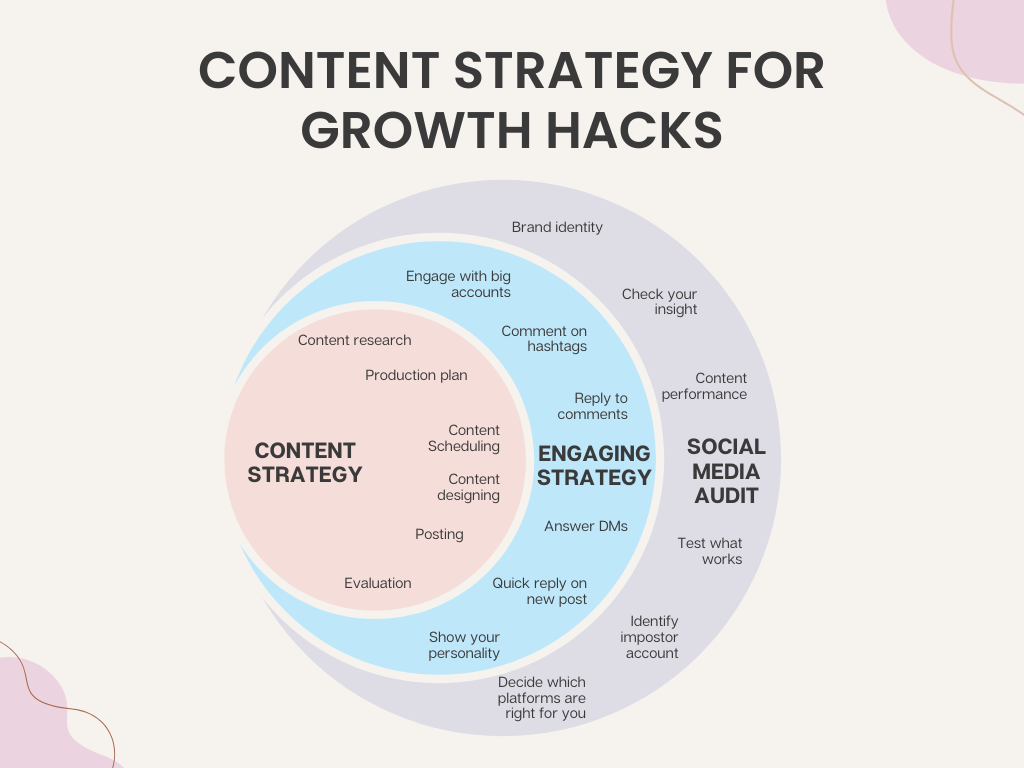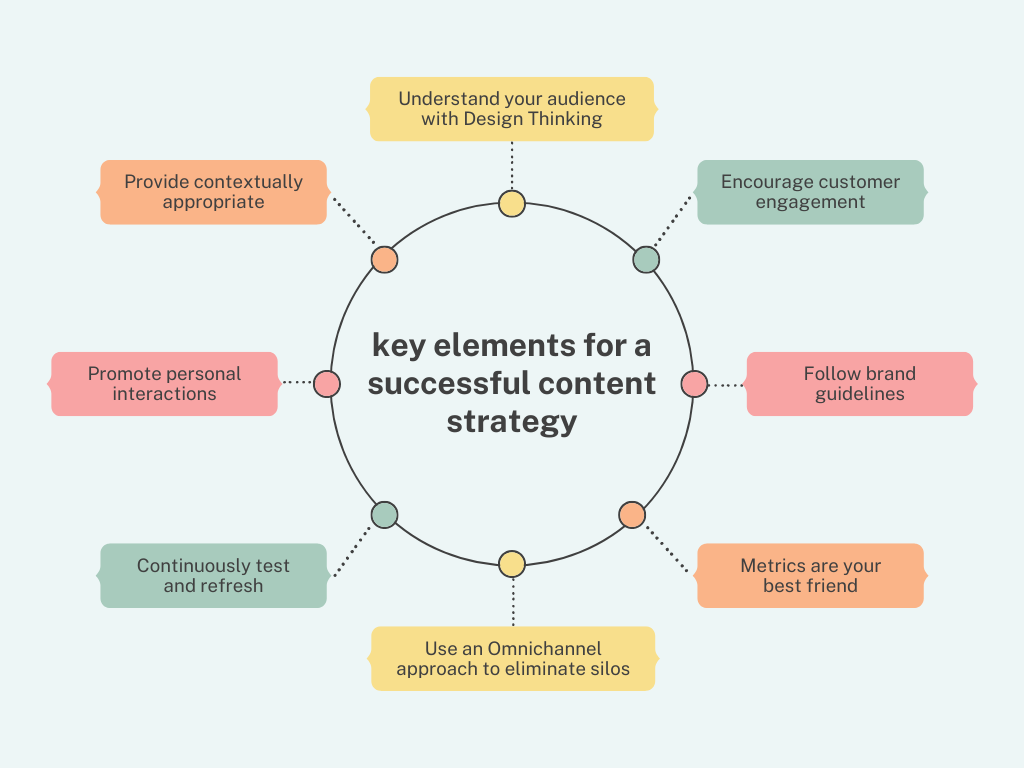
What is Content Strategy, and Why Does Your Business Need It?
Introduction
In today’s digital age, content strategy has become an indispensable part of successful businesses. But what exactly is content strategy for businesses? Simply put, content strategy refers to the planning, development, and management of content—written, visual, or multimedia—to achieve specific business objectives. It ensures that every piece of content produced aligns with your brand’s goals, resonates with your audience, and drives measurable outcomes.
For businesses in the wellness industry—be it yoga trainers, health experts, or wellness coaches—a well-defined content strategy serves as the backbone of marketing efforts. It allows you to create content that not only informs but also inspires and engages your audience. From blogs and social media posts to email newsletters and videos, a content strategy ensures consistency and relevance across all platforms. Let’s delve deeper into its significance and how it can elevate your business.
How Does Content Strategy Work?
A content strategy for businesses works by identifying your audience’s needs and aligning them with your business objectives. It involves several key steps:
- Audience Research: Understanding your target audience’s preferences, pain points, and behaviors.
- Content Goals: Setting clear objectives like increasing brand awareness, generating leads, or fostering customer loyalty.
- Content Planning: Deciding on the type of content to create, such as blogs, videos, or infographics.
- Distribution Channels: Choosing platforms—like Instagram for yoga tips or LinkedIn for professional health advice—to reach your audience.
- Performance Analysis: Measuring results using tools like Google Analytics to refine your strategy.

For example, a yoga expert could use a content strategy to create a series of beginner-friendly yoga tutorials on YouTube, supported by Instagram posts and blog articles to drive traffic.
Why is Content Strategy Important for Wellness Businesses?
Content strategy is crucial because it:
- Builds Authority: Sharing insightful, well-researched content positions you as an expert in your field.
- Engages Your Audience: Relevant content fosters deeper connections with your followers.
- Increases Visibility: SEO-optimized content can improve your search engine rankings, making it easier for potential clients to find you.
- Drives Conversions: Calls-to-action in your content can guide users to book classes, subscribe to newsletters, or purchase wellness packages.

Consider the case of a wellness coach who shares transformation stories on their blog. These stories not only inspire readers but also showcase the coach’s expertise, building trust and encouraging inquiries.
The Power of Content Assets
In addition to creating regular content, businesses should focus on building sustainable content assets—pieces of content that continue to deliver value over time. For instance, think about our podcast episodes where we share industry insights, our eBook on wellness practices, or the WhatsApp community we’ve built around mindfulness. These content assets are valuable because they are evergreen and provide long-term engagement opportunities.
Why is this important? Well, sustainable content assets help you stay relevant, build a strong brand presence, and foster long-term relationships with your audience. By leveraging different types of content assets, you can attract, engage, and retain your audience more effectively.
What Are the Key Components of a Successful Content Strategy?
- Consistency: Regularly posting high-quality content builds trust and keeps your audience engaged.
- Relevance: Address topics that resonate with your audience, such as stress management techniques or healthy eating tips.
- Diversity: Use a mix of content formats, including videos, infographics, and live sessions, to cater to different preferences.
- Feedback: Encourage and incorporate audience feedback to refine your content.
For example, a health expert might notice that posts about quick, healthy recipes get more engagement and decide to focus more on such content.
Different Types of Content Assets
Here are a few examples of content assets that can elevate your wellness business:
- Podcasts: Share insightful discussions with experts in your field. For example, our podcast series on yoga and wellness practices.
https://www.youtube.com/@AanyaWellness - eBooks and Guides: These can be detailed, downloadable resources that provide in-depth knowledge on topics like yoga practices or holistic health approaches.
https://edgyscribblers.com/wp-content/uploads/2025/01/E-Book_Final.pdf
- WhatsApp Communities: Build a space for your audience to engage with you directly, ask questions, and share their experiences.
- WhatsApp Newsletters: Keep your audience informed with regular updates and insights delivered straight to their phones.
- Online Courses or Workshops: Offer educational content in the form of paid or free courses to provide in-depth learning experiences.
https://aanyawellness.com/
By developing such assets, your business can create long-lasting content that continues to build relationships, establish authority, and convert followers into loyal clients.
Actions to Take for Implementing a Content Strategy
- Define Your Goals: Start with a clear vision of what you want to achieve.
- Identify Your Audience: Create detailed buyer personas to understand their needs.
- Audit Your Content: Review your existing content to identify gaps.
- Develop a Calendar: Plan your content in advance to ensure consistency.
- Invest in Tools: Use scheduling tools like Buffer or analytics platforms like SEMrush to streamline your strategy.
For instance, yoga trainers can plan monthly themes, such as mindfulness in March or flexibility in June, to align content with seasonal trends.
Conclusion
So, why does your business need a content strategy? The answer lies in its ability to transform random acts of content creation into a cohesive, goal-driven approach. By strategically crafting and distributing content—and focusing on building sustainable content assets—you can enhance your brand’s visibility, establish authority, and foster meaningful connections with your audience.
For wellness professionals, in particular, a robust content strategy can bridge the gap between your expertise and your audience’s needs. Whether it’s through inspiring blog posts, engaging social media campaigns, or informative videos, a well-executed strategy ensures your efforts drive measurable impact. Start building your content strategy today, and watch your business thrive in the digital landscape.
FAQ
- What are the first steps to creating a content strategy for my wellness business?
Addresses the initial implementation phase for wellness professionals looking to start with content strategy. - How can I determine the right platforms to share my content?
Helps users decide which distribution channels will best reach their target audience. - What tools can assist me in building and managing a content strategy effectively?
Focuses on tools and resources for efficient content planning and analysis. - How do I ensure my content stands out in the competitive wellness industry?
Guides users on crafting unique and engaging content tailored to their audience. - What metrics should I track to measure the success of my content strategy?
Explains performance analysis and how to adjust strategies for better outcomes.



